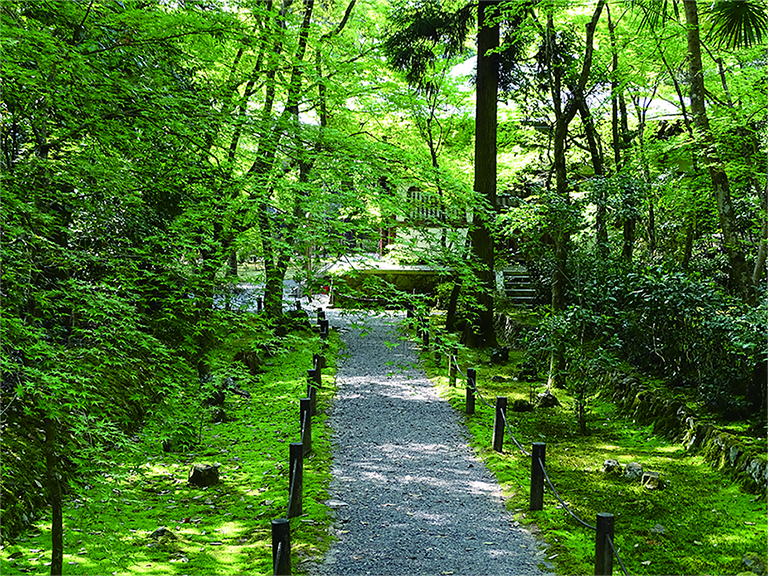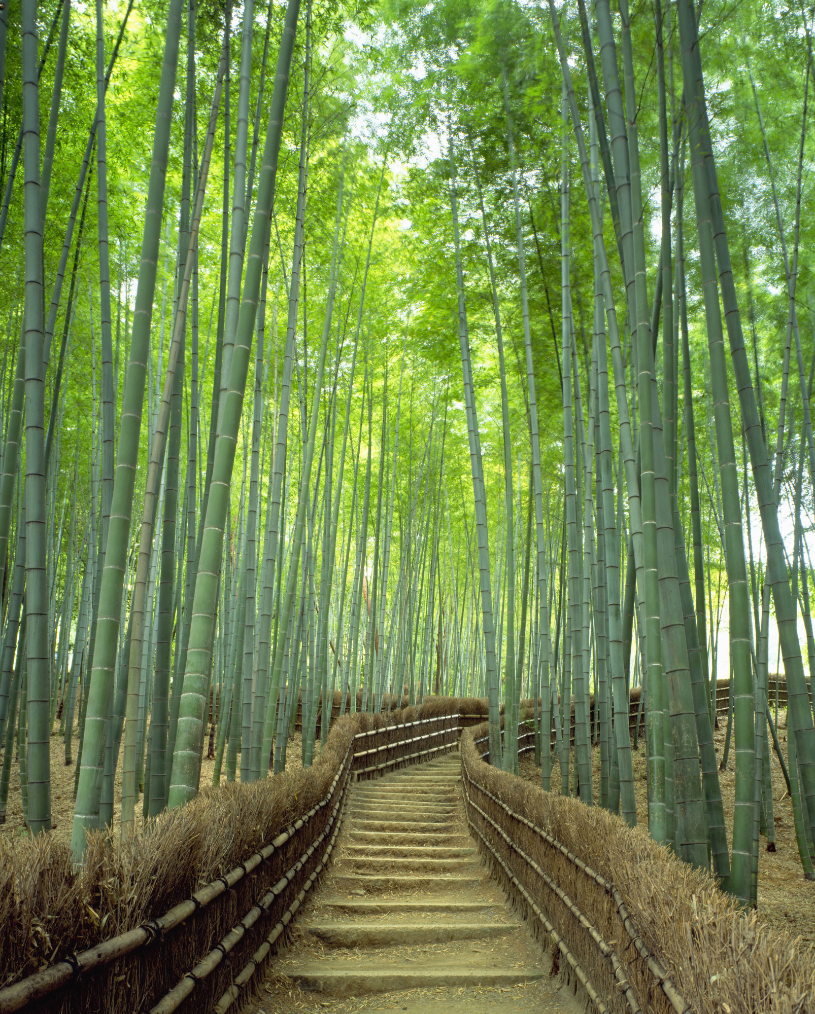De-stress in Kyoto
Take a moment to indulge in forest bathing, a contemplative walk through the woods to reconnect with nature.
06 April 2022
While everyone is talking about cherry blossoms, the green season that follows is one of the best times to immerse yourself in Kyoto’s lush forests.
It’s when Kyoto locals like to stretch their legs, go on hikes and enjoy a picnic on the outskirts of the city. It’s a particularly good time for forest bathing, known locally as shinrin-yoku. Recognised as rejuvenating to the mind, body and soul, find out where to enjoy this simple pleasure at any time of year in Kyoto.
Forest bathing and its benefits have been recognised by the Japanese government since 1982 and is even endorsed by the Forest Agency of Japan as a way of improving quality of life.
Shuhei Akahoshi, General Manager of Kyoto City Tourism Association (DMO KYOTO) says that contemplative walks through the woods that reconnect the individual with nature can lead to decreased stress, natural mood elevation and even a stronger immune system.
Forest bathing can be enjoyed throughout the year, however the new growth in spring is the best time to enjoy the tradition.
From bamboo groves to zen temples, we have selected our favourite Kyoto areas, places to indulge yourself in nature and reap the benefits.
Takao – the great outdoors
Escape the city and step into the woods of Takao, a mountainous area to the northwest of central Kyoto. Popular amongst hikers, Takao is home to several ancient temples. But while they may seem hidden away here in the forest, each has surprisingly important connections to Japanese history, particularly to the development of Buddhism in Japan. Learn more.
Kozan-ji Temple
One of the temples to visit in the area stands in a mountain forest with towering cedar trees lining the path to the temple. A quiet and secluded place, Kozan-ji’s charm lies in its atmosphere. You can sit on the temple’s veranda overlooking the Kiyotaki-gawa river valley, admire the scenery of green hills and listen to the forest sounds.
The grounds are also home to the oldest tea field in Japan and the first ever manga scroll. Learn more.
Keihoku – discover another Kyoto
In this northern part of Kyoto, you will find Japanese cedars and cypresses, as well as an air of serenity, with glimpses of mountains beyond. This area is just over an hour out of town, and still considered part of Kyoto city. A tranquil woodland in a stunning mountainous region, it’s a great place for a farm stay or back-to-nature exploring. Learn more.
Arashiyama – the famous Sagano Bamboo Forest
In Kyoto’s west, the most famous bamboo grove is undoubtedly the one located on the north of Arashiyama’s Togetsukyo Bridge. Visitors can stroll long paths lined with endless rows of towering bamboo. The experience has been described as other-worldly, serene and dreamlike. The pathway is open 24/7, but going early or late is recommended to avoid crowds. Learn more.
Nishikyo-ku Bamboo Forest
West of central Kyoto, the Nishikyo-ku ward is one of Japan’s centres of bamboo growing. Most of Kyoto’s traditional bamboo crafts and building materials are made from bamboo grown in this area. For those who would like to escape the crowds of more popular sites, Nishikyo-ku has a lot to offer. Learn more.
Kyoto City Rakusai Chikurin Bamboo Park
Half an hour southwest of Kyoto station within the Nishikyo-ku ward, this is a beautiful yet unknown hideaway. The boundary of the park is lined with bamboo plants along a serene and quintessentially Japanese-style path that stretches 1.8 kilometres.
This is a place where visitors can breathe the crisp, quiet air of a bamboo forest. The museum inside the park is an educational facility that showcases bamboo instruments and crafts, as well as historical bamboo artefacts. Learn more.







